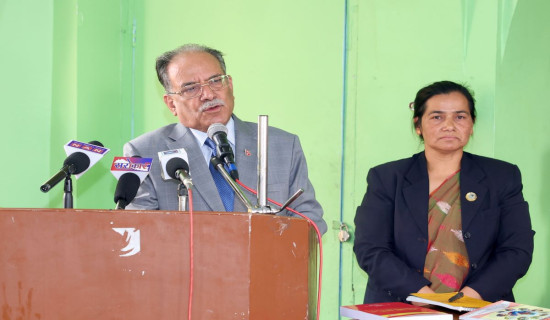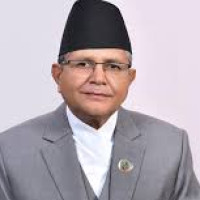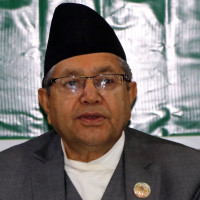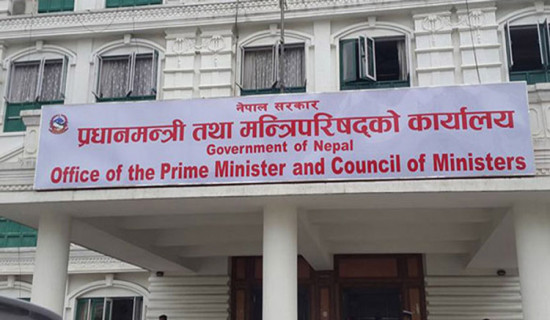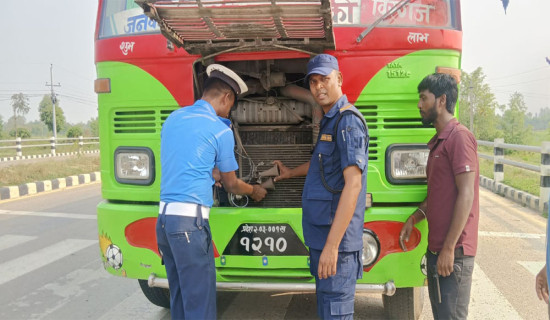- Sunday, 19 May 2024
At 123, Get Down To Brass Tacks
During the vicissitudes it has recorded in an unbeaten innings of 123 years of uninterrupted publication through thick and thin, the Gorkhapatra stands as the only newspaper, along with The Rising Nepal, to have never skipped an edition.
Launched during Rana Prime Minister Dev Shumsher’s brief rule in 1901, first as a weekly before it came out twice a week and eventually appeared in a daily incarnation in 1961. The next line of newspapers arrived only in 1951, with the dawn of modern democracy.
There are not many news publications aboard the exclusive club of centenarians in South Asia and a majority of other independent nations. Some arrogantly, or perhaps ignorantly, harp against state-owned newspapers that are not the norm in advanced democracies. In reality, all advanced democracies have state-backed broadcast media, including the United States that runs the Voice of America designed for foreign consumption.
They forget that the private sector in the eventual democracies undertook to bring out news sheets because of the early availability of the printing press first in Europe where the machine was invented. In the process, some innovative printers undertook publishing newssheets. Germany took the lead in the early 16th century, only to be subsequently emulated in various European cities.
Delayed arrival:
Most European powers amassed riches through the colonies they exploited. Initially, official documents and pure literature were the intended fodder for the printing setups. Publishers launched newspapers catering to the ruling class and the local elite with the palate and pocket for the information providers.
The colonies had the advantage of running the printing machines early on compared with Nepal, one of the 20 oldest existing independent countries in a world, which now has more than 200 independent states. Half a century after Jung Bahadur Rana ordered for the first printing press to Nepal in 1851, Dev Shumsher gave a directive for the launch of Nepal’s pioneer newspaper in 1901.
Things are different today. Media presence in Nepal has reached a saturation point. This is evidenced by factors like educational level, purchasing power, volume of individual investment in infrastructure and human resources, and distribution/transmission quality and network are taken into account.
Given the heightened battle for vastly fragmented audience attention on account of multifarious choices available, the news outlets among communication and mass communication channels face existential challenge. More than the prospect of thriving, their fundamental concern is one of survival to ensure that their balance sheets do not sink in the red.
This is especially so in Nepal where several thousand print and broadcast news media jostle for drawing the eyes and eardrums of potential readers, listeners, viewers and surfers. Its prevailing conditions are veritably more exacting than in most other countries in South Asia and the rest of the world. Even the once highly successful papers have shed their average page numbers to eight from 12/16 offered until the pre-Covid period.
Stunning march
The Gorkhapatra’s immediate next younger news sibling, The Rising Nepal, stands as not only the first English broadcast daily but also the second oldest existing daily that has maintained a regular printing pace neck and neck with the grand old lady of the country’s print line.
Even The Rising Nepal wore a lean look from the standpoint of advertising revenue since its inception in 1965, though it stole a march over its rivals among in English, when it came to copies sold and advertisement collected for at least the first three decades.
Hence the pressing task for the Gorkhapatra Sansthan is to clear the backlog of shortcomings and fossilised practices in order to march forward on the strength of its existing as well as potential strengths. Shedding complexities and becoming assertive means nothing to lose but only to secure due space.
Nepal government, Press Council Nepal (PCN) and many other organisations in dozens of districts honour and award journalists from the cross-section of the media landscape. There is even an unusual case of PCN awarding a Nepali correspondent working for foreign media. Bafflingly, the Gorkhapatra and its sister publications, including The Rising Nepal, Madhupark, Yuva Manch and Muna, and their editorial staff members have never attracted the annual award-giving attention of the PCN.
The Gorkhapatra Sansthan’s three monthly magazines are the most prominent publications in their respective genres—literature, youth and children. These constitute deadline-meeting publications that each command the largest circulation figures. But the extremely meagre advertising in the trio underscores an irony that needs to be ironed out with redoubled efforts.
Gaps to fill:
Filling in the existing gaping gaps should generate revenue for more investments in human resources and infrastructure, enabling the institution to offer contents of yet higher depth and breadth and sustain the interests of its regular readers, and score new breakthroughs in these times of fast thinning reading population.
The management’s focus on inviting, encouraging and proactively assisting research works undertaken by students, freelancers and academics can expand its scope of service to society. It is a treasure trove for the public to get acquainted with some of the contemporary issues the paper covered. The information will lead to clues for follow-up works.
In deference to the heavily competitive environment of numerous information outlets, including an array of other forms of communication contents, today’s audiences have enormous choices and, naturally, limited time. The only feasible alternative for news channel operators is to go for newsworthy stories, most of which carry a common denomination in attracting bulk, if not almost all, of a publication’s regular readers. It will also increase the number of casual readers to become subscribers.
Mobilisation of district correspondents and upgraded bureaus in the provinces for significant events and developments should boost a newspaper’s nationwide presence with a feel for the news emanating from all over the 77 districts and seven provinces. Once quality service clicks with the reading public, a publication’s reputation shores up.
Online news portal is undoubtedly the new demand and presence in countries that once recorded large circulation figures. Most major dailies and some weekly papers publish not only printed copies but, concurrently, have joined the news portal league.
In many ways, the digital technology flung open a range of opportunities for the dissemination of a variety of information and entertainment with easier access and multiple content channels.
On account of cutting corners too deeply by business and management departments, in-depth news is often lacking in an overwhelming majority of channels. Something newsworthy originating anywhere is a potential source of public interest, which is professionally tapped and filtered as an intelligent, impartial and audience-oriented content.
The Gorkhapatra Sansthan has not lost its lure, but it sure can do better. Prominent media personalities with years of private sector newspaper experience have been inducted as chief editors, consultant editors, general managers and executive chairpersons. It is a testimony of the Sansthan’s past and the present credentials. Banking disproportionately on the days gone by without initiatives for doing more does not automatically stem a decline.
As a daily reader and someone associated with the Gorkhapatra Sansthan for more than five decades—first as a staff in The Rising Nepal’s newsroom, then its chief editor plus member of executive board, and later continuing as its regular columnist, the corporation is my first professional alma mater that laid down the foundation for me to branch out to the academic world of journalism and mass communications and take credit for introducing Bachelor’s and Master’s level education followed by PhD courses in journalism and mass communications at the nation’s first and premier university.
(Professor Kharel has authored/co-authored more than 20 media books to his credit.)



